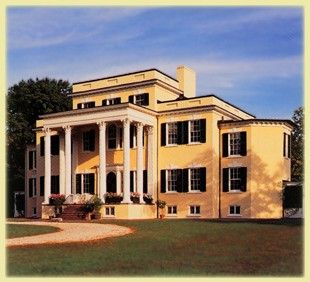Robert Carter III, you may ask? Who in the world was he and why should we care?
Well, I’ll tell you why we should: February is black history month, the month during which we should all reflect on the contributions that black Americans have made to this nation of ours and on the suffering our black brothers and sisters have endured. Robert Carter III is part of that history, for by his Deed of Gift in 1791 Carter–the richest man in the colony of Virginia–made clear his intention to free more than 450 slaves, more than the total number of slaves owned by his neighbors George Washington and Thomas Jefferson combined.
In my own case, I’d never heard of him until I encountered a copy of The First Emancipator in the gift shop of the Carriage House at Oatlands Plantation in the summer of 2007. Oatlands Plantation, built by Robert Carter’s uncle, George Carter, is a National Historic Trust Landmark, nestled in the rolling hills of Leesburg, Virginia near Goose Creek. Every time I visit it, which I do several times a year, I feel soothed by the peace of the beautiful Greek Revival mansion surrounded by acres of well-tended gardens and green meadows. Entering the long graveled driveway that leads from the entrance gates to the Carriage House, one can see horses grazing in the paddock to the left of the carriage drive and views of distant hills on the right.
When I realized The First Emancipator, by Andrew Levy, was about a member of the Carter family, I was intrigued enough to buy the book.

It will not violate the Fair Use law if I quote just one paragraph of the book jacket blurb:
Robert Carter III, the grandson of Tidewater legend Robert “King” Carter, was born into the highest circles of Virginia’s Colonial aristocracy. He was neighbor and kin to the Washingtons and Lees and a friend and peer to Thomas Jefferson and George Mason. But on September 5, 1791, Carter severed his ties with this glamorous elite at the stroke of a pen. In a document he called his Deed of Gift, Carter declared his intent to set free nearly five hundred slaves in the largest single act of liberation in the history of American slavery before the Emancipation Proclamation.
According to Levy, as a young man Carter went to England to complete his education and while there became a Baptist. After returning to Virginia he became more and more convinced that slavery was wrong. Although an extremely rich man, he did not make his mark on society: unlike Jefferson, Madison, and Washington, he was not a good writer, and unlike them, he could not win election to the House of Burgesses, which at the time offered the most certain path to political power and prominence.
Carter’s tortured Christian soul led to his decision to set his slaves free in graduated “waves.” Groups were freed as soon as he estimated they could earn a living in the non-plantation economy of the times. By the time he’d freed all of them, he was so wildly unpopular with his fellow plantation owners that his life was in danger. To escape being shot, he sailed to Baltimore in 1793, there to live with one of his daughters until he died in 1804.
Earlier in this diary I spoke of the beauty of Oatlands, of the soothing quality it always exerts on my soul when I visit the place. After reading Denise Oliver Velez’s groundbreaking diary, “George Washington is Not My ‘Great White Father,'” I am ashamed to say that my view of Oatlands has been that of a privileged white person. Although I sometimes thought of the people who worked on the plantation in its heyday, I didn’t think of the slaves who labored in the hot Virginia summers and freezing winters to build the place, brick by brick, and tend the grounds. And although I sometimes did pause to think of the house slaves gliding through the shadows to tend to the needs of their white masters, I didn’t stop to think long and hard of the many humiliations, privations, and beatings they endured. For that, I profoundly apologize.
In 2004 the descendant of a slave who had worked at Oatlands Plantation before the Civil War was married at Oatlands. The property is used as a venue for weddings, art shows, point-to-point races, and other social events. As described in the Washington Post story here, his feelings about the place were very different from my own:
Initially, John Buchanan was extremely reluctant to get married at a place associated with slavery. He had been to Oatlands for two family reunions but remained on the grounds, under a tent, far from the mansion.
“It was really emotional. It really affected me. The first time I went out there, I didn’t want to leave the parking lot,” Buchanan said. “Hearing stories of the rich owners and the people who had slaves there–it’s difficult. I wasn’t really comfortable until Lauren and I took the tour there.”
To Mr. Buchanan, Oatlands was not a place of beauty but a symbol of oppression–just as, in the eyes of Native Americans, the holiday we call “Columbus Day” is nothing to celebrate.
Modern apologists for our Founding Fathers have explained the discrepancy between what they wrote and what they did by saying they were “the product of their times” and although they may personally have abhorred slavery, they could do nothing about it. Freeing the slaves would have been too difficult; it simply couldn’t be done. But Robert Carter III, the First Emancipator, proved it could be done and it was.
And for that we should accord him his rightful place in American history.

17 comments